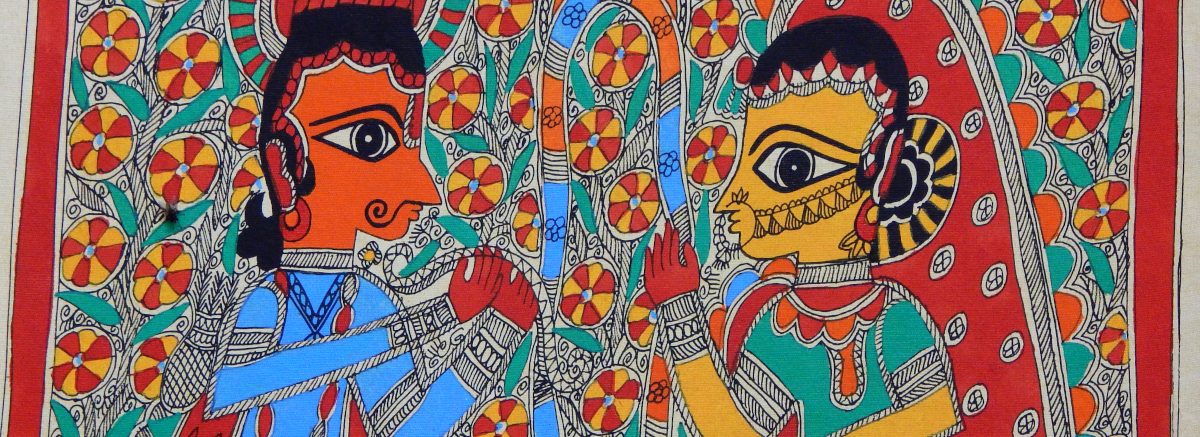Madhubani or Mithila painting was always done on walls or floors, but the year 1967-1968 can be treated as a landmark in Indian history of Madhubani painting. The land was in grip of terrible famine. The condition was at their worst, the entire region landscape was harsh, cracked and desolated with remorseless heat scorching the earth. There had been no crops for the last two years, people were starving for food, seeing this Ms. Pupul Jyakar, the then director of All Indo-Nepal Handicraft Board sent Mr. Bhaskar Kulkarni the Mumbai based artist to mithila, to encourage the women to make paintings on paper and earn a living so the women started painting on paper and selling it to earn a living. It was the time when Madhubani gained popularity across the globe as some foreign scholars like Yves Vequad, and anthropologist Erika Moser, Raymond Le Owens promoted it internationally.
This beautiful art got recognition in 1975 when Jagdamba Devi of jitwarpur village got awarded with Padma Shri by President of India. The efforts made by Tokyo Hasegawa, who set up the MITHILA MUSEUM in Tokamachi which has more than 800 madhubani paintings Japan showed interest in Madhubani painting. Yves Vequad, a French novelist and journalist, was the first foreigners to visit Mithila in the early 1970s. His research produced a book and a film, “THE WOMEN PAINTERS OF MITHIL”
Madhubani painting saved more than 100 trees in 2012, they were cut in the name of expanding roads and development. Shashthi Nath Jha who runs the Gram Vikas Parishad, an NGO asked women to paint the trees with Madhubani paintings to protect the trees. Later not a single tree were cut as people started adoring them as forms of religious symbol.

